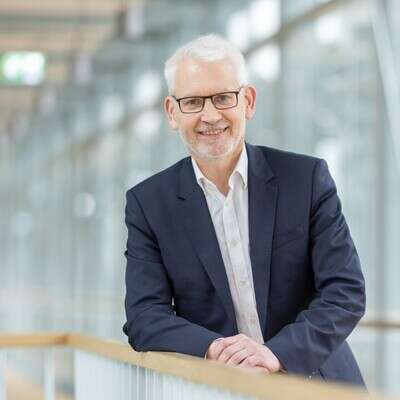Boyden Executive Survey
Latin America Regional Analysis: Strengthening the human-centric core of Industry 5.0
How can organisations thrive in a complex world of risk?
In this regional analysis of Boyden's global report, Strengthening the human-centric core of Industry 5.0: How can organisations thrive in a complex world of risk?, we highlight findings and trends in South America with sector insight from Boyden partners.
Latin America is a region that invests strongly in talent: findings show an ongoing commitment to retraining or redeploying existing people, leadership development and hiring more globally focused executives, as well as robust investment in board assessment and the use of interim executives.
In Industry 5.0, there is a sharper focus therefore on innovation and digital transformation, the top two drivers of growth, with digital talent the priority area for strengthening executive skills.
Latin America is distinguished by significantly higher confidence in organizational growth potential than other regions. The impact of the invasion of Ukraine was yet to be fully felt at the time of our research, although respondents were already concerned by inflation and rising costs.
What also distinguishes Latin America is that talent issues are not impacting organizational confidence to the same extent as other regions, with less of a gap between organizational confidence and confidence in having the right talent to align with strategy. Respondents also reveal higher confidence in the workforce than in the board, contrary to the rest of the world, where confidence rises with seniority.
The top growth drivers are innovation, digital transformation, human capital and product or service diversification. This region leads the world in recognizing growth potential from net zero initiatives. Almost twice the number of President/CEOs see net zero initiatives as a top three driver of growth than in Europe, and three times the number compared to North America.
Respondents identify inflation as the top external risk, in keeping with global peers; however, they are more concerned about climate change and covid variants/other viruses.
In structural change, the top driver is industry transformation, and respondents put greater emphasis on ESG initiatives than global peers, with over a fifth seeing these as a top three driver of structural change.
In terms of ESG and its impact on corporate culture, this region is ahead of global peers, with a higher proportion of respondents reporting that ESG-sustainability is deeply embedded in their culture and ESG-DEI included in most business decisions. ESG commitments are a top driver for recruitment.
Respondents in Latin America are more outwardly focused than their global peers, with a stronger focus on entry into new markets, together with reginal and international expansion. Among the most prized soft leadership skills, is a global or multicultural perspective.

Sector Insights
Consumer & retail: customer expectations are the top driver of growth and customer needs the top driver of cultural shifts. Inflation is the greatest external risk. Respondents expect structural change to be driven by global growth, hence hiring more globally-focused executives. The most valuable soft skill is empathy.
Financial services: the top growth driver is innovation. Respondents are as concerned about climate change as they are about inflation. The top external risk is global economic volatility. Digital advances are the top driver of structural change. Distinctive in expecting culture shifts to be driven by multigenerational teams. The most valuable soft skill is empathy.
Healthcare & life sciences: the least confident in organizational growth potential. Distinctive, with tech respondents, in human capital being the top driver of growth, followed by entry into new markets. The top external risk is supply chain disruption. Internally, respondents are the most focused on people issues, concerned by hybrid working, employee burnout and a weak leadership team. Also see the need for different executive skill sets and expect the greatest challenges in recruitment and retention. The top driver of structural change is jointly industry transformation and nationalistic legislative policies. Cultural shifts will be driven by changes in ownership, customer needs and organizational agility. The most valuable soft skill is influence.
Industrial: the highest, extreme confidence in organizational growth potential, with growth driven by innovation. The top external risk is inflation and internally, a need for different executive skill sets. The top driver of structural change is industry transformation. Cultural shifts will be driven by hybrid working. The most valuable soft skill is a global or multicultural perspective.
Professional services: above average, extreme confidence in organizational growth potential, with growth driven by digital transformation, innovation and entry into new markets. The top external risk is inflation, and internally, concerned by lack of innovation. Nationalistic legislative policies are the top driver of structural change. The most likely to engage interim executives in 2023. Cultural shifts will be driven by hybrid working. The most valuable soft skill is understanding employee needs.
Technology: Distinctive, with healthcare & life sciences respondents, in human capital being the top driver of growth, followed by entry into new markets. By far the most concerned by climate change; the top external risks are equally climate change, inflation and global economic volatility. Structural change will be driven jointly by competing for the right talent and regional growth. Highest level of investment in talent, with leadership development for high potentials, retraining or redeployment and hiring more globally focused executives; overall, the most active in hiring. Cultural shifts will be driven equally by innovation, digital advances and intra-regional people diversity. The most valuable soft skill is attracting/retaining talent.




